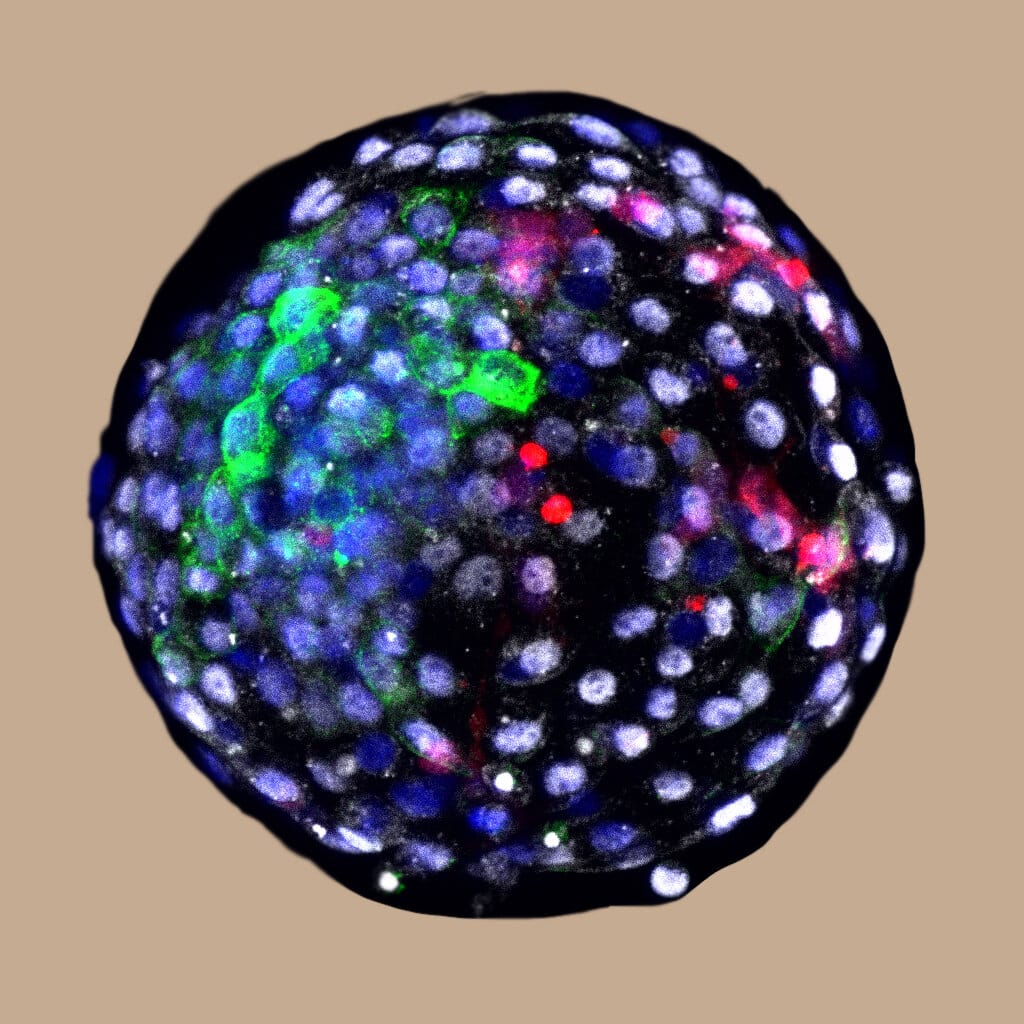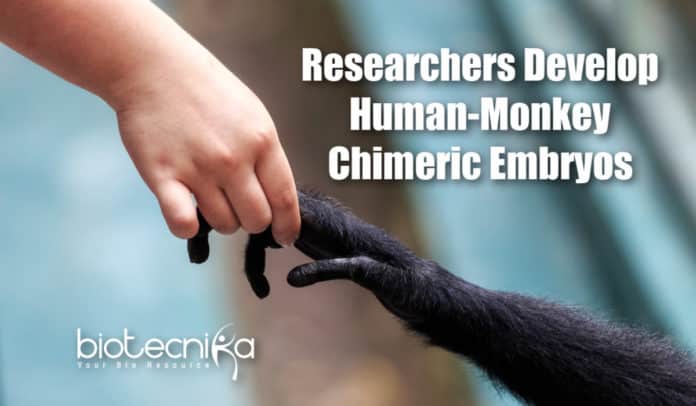Researchers Created Chimeric Human-Monkey Embryos
Scientists in the US and China have inoculated human stem cells into embryos of primate and were able to develop chimeric embryos for a considerable time period up to 20 days. Despite the ethical issues, the study has the potential to offer a new understanding of evolution and developmental biology. It even has implications for creating new prototypes of human diseases and biology. The study was published in the journal Cell on April 15, 2021.
Juan Carlos Izpisua Belmonte, professor, Gene Expression Laboratory, Salk Institute for Biological Sciences & senior writer, stated that since they are not able to perform certain experiments in humans, it is crucial that they have better prototypes to more precisely understand and study human disease and biology. One of the crucial objectives of experimental biology is to develop the model systems that enable the study of
human conditions under invivo settings.Interspecies chimeras in mammals have been developed since the 1970s when scientists made them in rats and employed them to explore early developmental processes. The breakthrough that made the present research possible came in 2020 when the collaborating team of the research-supervised by Weizhi Ji, Kunming University of Science & Technology, Yunnan, China- devised technology that enabled monkey embryos to survive & grow in vitro for an extended time period.

In the present research, 6 days after the monkey embryos had been produced, each one was infused with 25 human cells. The cells were derived from EPS (Expanded Pluripotent Stem Cells), and induced pluripotent cell line, which have the capacity to contribute to both extra-embryonic and embryonic tissues. Following a day, human cells were identified in 132 embryos. Following 10 days, it was found that 103 chimeric embryos were still growing. Viability soon started dropping and by the 19th day, only 3 chimeras were still alive. Significantly, although, the human cell percentage within the embryos stayed high all the time they pursued to develop.
Izpisua Belmonte claimed that historically, the human-animal chimeras’ generation has suffered from the integration of human cells to host species and low efficiency. Making a chimera of human & non-human primate, a species more strongly associated with humans along with the evolutionary record compared to formerly employed species, will enable them to obtain a better understanding of whether there are evolutionarily enforced hurdles to chimera generation & whether there are any ways by which it can be tackled.
The researchers carried out transcriptome analysis on both monkey and human cells from the embryos. Izpisua Belmonte elucidated that from these tests, many communication pathways that were either strengthened or novel in chimeric cells were detected. Discerning which pathways are engaged in chimeric cell communication will enable them to potentially boost this communication and enhance the efficiency of chimerism within a host species that are more evolutionarily unrelated to humans.

A vital next step of this study is to assess in-depth all the molecular pathways that are engaged in this interspecies communication, with the pressing aim of determining which pathways are important to the developmental process. Longer-term, scientists intend to utilize chimeras not just to model disease and explore early human development, but also to devise new strategies for drug screening and possibly making transplantable organs, tissues, or cells.
An additional Preview in Cell indicates the protective ethical consideration regarding the generation of non-human primate/human chimeras. Izpisua Belmonte additionally stated that it is their duty as a researcher to perform their studies carefully, adhering to all social, legal, and ethical guideline in place. He included that prior to starting this work, ethical reviews and consultation were carried out both through outreach to non-affiliated bioethicists and at the institutional level. This detailed and comprehensive process helped guide their experiments.
Controversial Chimera Embryos, Part Human Part Monkey, Chimeric Human-Monkey Embryos, Human & Non-Human Primate Cells, Controversial Chimera Embryos
Also Read: New Nanotech Kills Fungal & Bacterial Cells






























